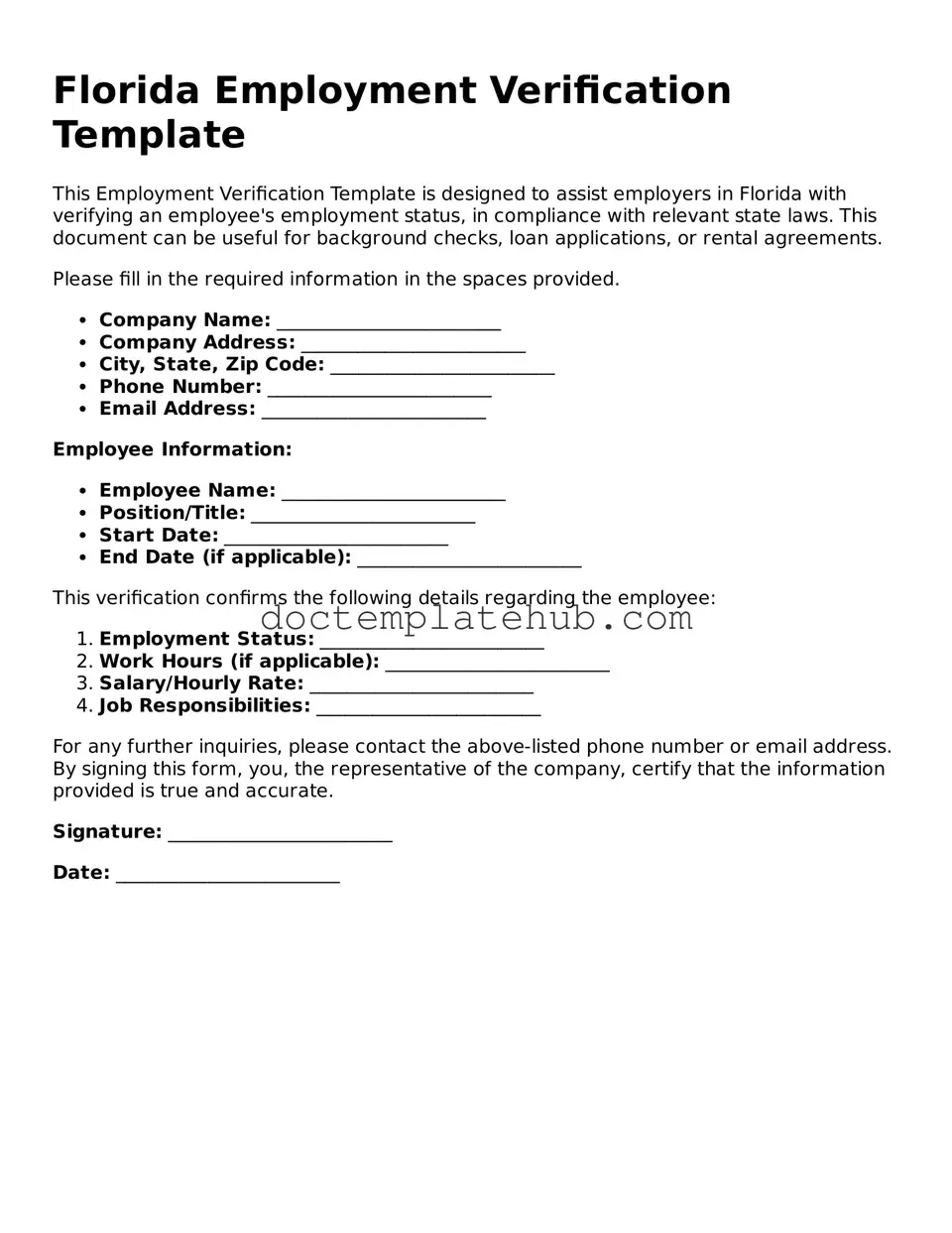The Florida Employment Verification form serves a vital purpose in confirming an individual's employment status, but it shares similarities with several other important documents. One such document is the I-9 form. This form is used by employers to verify the identity and employment authorization of individuals hired for employment in the United States. Like the Florida Employment Verification form, the I-9 requires information about the employee's job title and employer details, ensuring that the employment status is accurately documented.
Another document akin to the Florida Employment Verification form is the W-2 form. This tax form is issued by employers to report an employee's annual wages and the taxes withheld from their paycheck. Both forms provide crucial information about employment, including the employer's identification and the employee's earnings. However, while the Employment Verification form focuses on current employment status, the W-2 summarizes the financial aspects of employment over a year.
The pay stub is also similar in function to the Florida Employment Verification form. Pay stubs provide detailed information about an employee’s earnings for a specific pay period, including hours worked, deductions, and net pay. Both documents can serve as proof of employment, but pay stubs offer a more granular view of an employee's earnings, while the Employment Verification form provides a broader overview of employment status.
The Social Security Administration (SSA) employment verification letter is another document that shares similarities. This letter is often requested to confirm an individual's work history for various purposes, such as applying for loans or benefits. Like the Florida Employment Verification form, the SSA letter confirms employment but may include historical data rather than just current status.
Similarly, the unemployment verification form is designed to confirm an individual's employment status when applying for unemployment benefits. This document serves to validate that the individual was previously employed and is now seeking assistance. Both forms are essential for verifying employment but are used in different contexts—one for job applications and the other for benefits.
The employment reference letter is another related document. This letter, typically written by a former employer or colleague, provides insights into an individual's work ethic, skills, and character. While the Florida Employment Verification form confirms employment details, the reference letter adds a personal touch, offering qualitative information about the employee's performance and contributions.
The job offer letter also bears resemblance to the Florida Employment Verification form. When a company extends a job offer, it typically includes the position, salary, and start date. This document serves as an official confirmation of employment, similar to the Employment Verification form, which verifies that the individual is indeed employed with a specific company.
Finally, the employment contract is another document that parallels the Florida Employment Verification form. This legal agreement outlines the terms of employment, including job responsibilities, salary, and duration of employment. Both documents confirm the employment relationship, but the employment contract provides a comprehensive overview of the terms and conditions, while the Employment Verification form focuses on the verification aspect.
